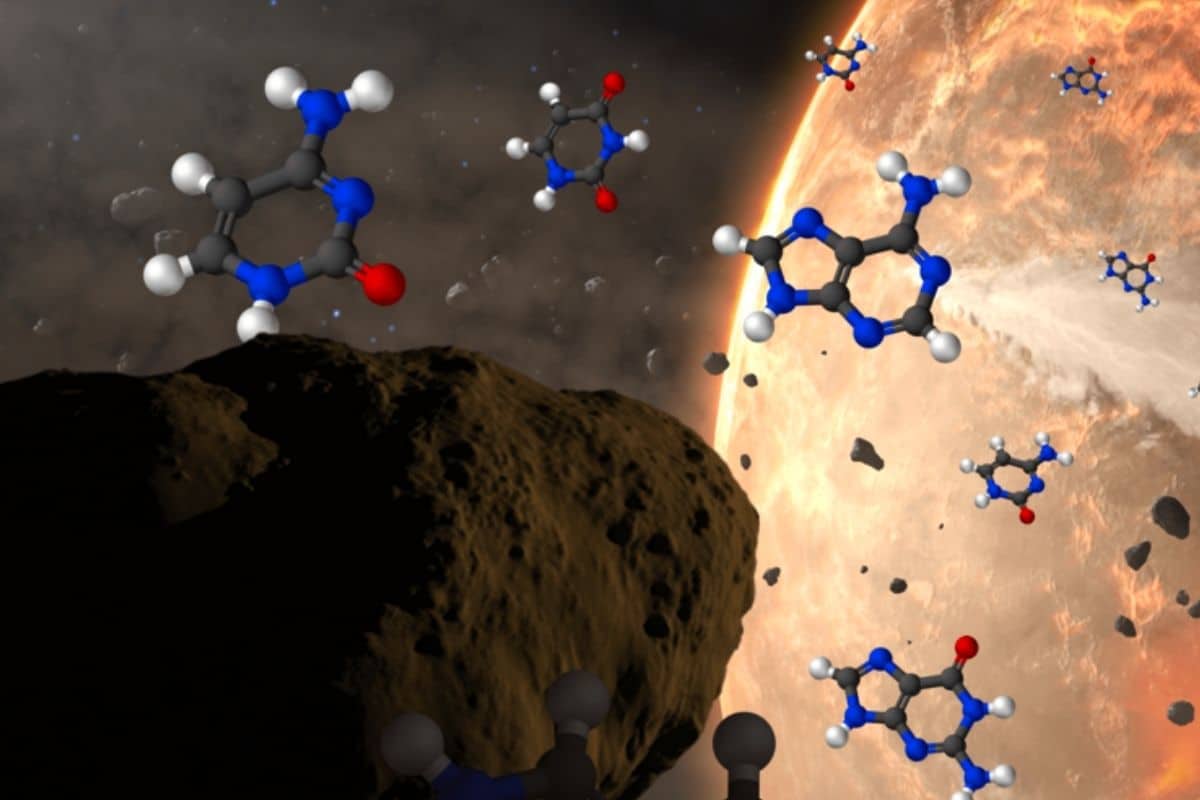
After some scientific cooking, researchers have also succeeded in locating the last two ‘ingredients’ for DNA in a meteorite. And with that, the evidence piles up that the building blocks of life on Earth have an extraterrestrial origin.
Every living thing on Earth harbors DNA or RNA, which harbors the instructions needed to form and function such a life form. That DNA and RNA is in turn made up of five components: the nucleobases.
Out of space
Scientists have long suspected that these five components of DNA and RNA originate in space and were deposited on Earth by asteroids. And previous studies have indeed shown that three of the five components of DNA and RNA can be found in meteorites. Earlier, however, researchers were unable to find the remaining two nucleobases in space rocks that landed on Earth.
Cytosine and thymine
A new study – published in the magazine Nature – is now changing that. Because after previous studies found the nucleobases guanine, adenine and uracil in meteorites, scientists have now also found the nucleobases cytosine and thymine in an alien space rock. “We now have evidence that the complete set of nucleobases that life uses today were available on Earth around the time the first life forms emerged,” said Danny Glavin, one of the authors of the study.
hot tea
The fact that it has taken so long to detect cytosine and thymine in meteorites is probably because these two nucleobases are much more vulnerable than the previously discovered guanine, adenine and uracil. It is suspected that earlier researchers often already destroyed the two nucleobases while sampling their meteorites. This is because sampling is best done in a special – and violent – way for the vulnerable cytosine and thymine. To find out what a meteorite houses, researchers often make ‘tea’ of it; Pieces of meteorite are dipped in a red-hot bath, after which the molecules in the meteorite are drawn into the surrounding liquid. Then the composition of that ‘alien tea’ is analysed. “We study these extracts because they harbor the good stuff: the ancient organic molecules that may have been important building blocks for life on Earth,” Glavin explains.
cold soup
However, in pursuit of the vulnerable remaining two nucleobases, scientists took a slightly different tack; instead of a piping hot tea, they made a cold ‘soup’ to determine the contents of a meteorite. Instead of hot formic acid – which is very reactive and can easily destroy the vulnerable nucleobases – cool water was used to extract the molecules from the meteorite. What probably also helped is that the researchers used much more sensitive equipment to analyze the cold soup; this also allowed for much smaller amounts of these two nucleobases to be detected.
And that approach has paid off, because the researchers show that their meteorites – they studied three – harbor both cytosine and thymine. “This group used a method that used to make a type of cold brew rather than hot tea and was able to extract more fragile substances from the meteorites,” said Jason Dworkin, co-author of the study and a NASA employee. “I was surprised that they had spotted cytosine, because that is very vulnerable.”
More evidence, but no certainty yet
Now that all five nucleobases have been found in meteorites, it has certainly not yet been proven that the building blocks of life were brought to Earth by meteorites. But that theory seems to be getting more and more plausible. “More and more puzzle pieces are falling into place,” says Dworkin. “We have found that meteorites harbor sugars and now also the nucleobases. It is exciting to see so much progress being made in research into the formation of basic biological molecules in space.”
The study also paves the way for future research, with the slightly different – but very successful – sampling of the meteorites, in which the same approach can be used to investigate other space rocks or pieces of them in more detail. You can think of meteorites that fell here on earth. But also to pieces of asteroids that can still be found in space; space probe OSIRIS-REx will deliver samples of asteroid Bennu to Earth for analysis next year.
Source material:
†Could the Blueprint for Life Have Been Generated in Asteroids?” – NASA
Image at the top of this article: